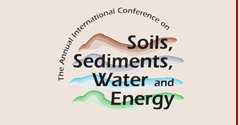Article Title
Abstract
The New Bedford Harbor Superfund Site in southeastern Massachusetts includes the shallow northern reaches of the Acushnet River estuary through the commercial port of New Bedford and adjacent areas of Buzzards Bay. The sediments in the harbor are contaminated with high levels of PCBs and heavy metals from the industrial development surrounding the harbor. From the 1940s through the 1970s, electrical capacitor manufacturing plants discharged PCBs into New Bedford Harbor and its estuaries. In the mid-1970s EPA sampling identified PCBs in the river and harbor sediments greater than 100,000 mg/kg. In 1979, the Massachusetts Department of Public Health prohibited fishing and shell-fishing from the river and harbor due to the high levels of PCB contamination found in the harbor and in the seafood from the area. The site was included on the National Priorities List (NPL) in September 1983, as one of the hottest PCB sites in the United States. In September 1998, after years of study and public debate, EPA selected a cleanup remedy that involved the dredging and containment of approximately 170 acres of PCB contaminated sediment. The principal goals of the project were the reduction in health risks from consumption of PCB-contaminated local seafood and from exposure to contaminated shoreline sediments, and the improvement of water quality in the marine ecosystem. The prescribed PCB cleanup standards for the sediment ranged from 1 mg/kg shoreline areas immediately adjacent to residential properties, up to 50 mg/kg in sediment in remote salt marshes not readily accessible to the public. Removal of sediments to achieve the cleanup standards requires mechanical or hydraulic dredging of more than 800,000 cubic yards of material. Correlation of analytical data and sediment cores shows a relationship between the presence of PCB contamination and distribution of the organic layer (OL) in the river. The relationship exists because of the nature of the contamination and its affinity for organic material. Sediment cores have been collected to refine the modeled sediment removal maps and guide target depths for dredging.
Recommended Citation
Morris, Michael W.; Rigassio Smith, Anita; Cummings, Joshua; and Walsh, Dave
(2011)
"Relationship Between Sediment Morphology and PCB Contamination in the Acushnet River, New Bedford, Massachusetts,"
Proceedings of the Annual International Conference on Soils, Sediments, Water and Energy: Vol. 16, Article 5.
Available at:
https://scholarworks.umass.edu/soilsproceedings/vol16/iss1/5
